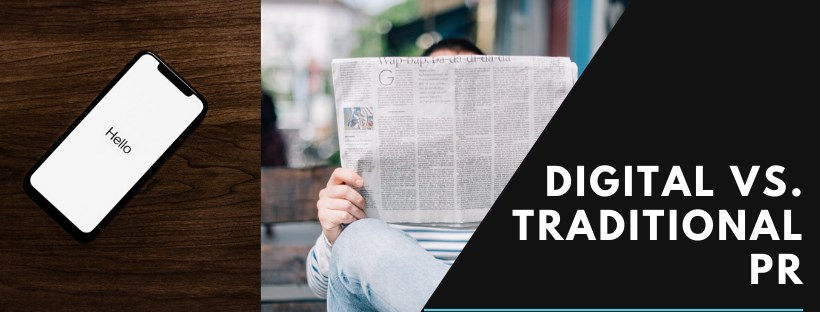As more consumers are spending more time online and on social media, digital PR has become a necessity for most brands. For many, though, the jump from traditional PR to digital PR has come with some confusing and challenging hurdles. That’s not surprising given how similar – and how different – digital and traditional PR can be.
Traditional PR employs strong, directed, precise communication built on a foundation of carefully-constructed relationships with key journalists and other opinion-makers. It’s imperative to know the right people in the right way, so when there’s a message to disperse to a target audience, there’s a member of the media gladly willing to be a brand megaphone.
The working goal of traditional PR is to get brands in print, on TV, and on the radio. This could mean prime-time TV or drive-time radio, and the proverbial (or literal) cover of Rolling Stone, or it could mean investing in messaging through niche trade magazines, specific radio shows, or individual TV programs.
With the rise of digital media, some made the mistake of treating digital “new” media as just an online version of traditional media. But there are key differences. First, timeline: digital media is constant, and it’s both instant and forever. A message can be lost in a flurry of louder bigger messages, or it could stick around well past the sell-by date, especially negative PR, as a creeping, hovering black cloud that seems to have taken on a life of its own.
That said, when handled properly and with an understanding of the differences, digital PR can work wonders. One of the first benefits is the larger audience. More people are online at any given time than are ever watching a specific TV program. The connection points are also much more readily available. Plus, people are right there, without a go-between. Brands can choose to hire an influencer, or to trust a media professional, or they can speak directly to their client base… or all of the above.
And that direct connection potential matters, because digital PR is not all about awareness. It’s about cultivating and building relationships with clients and prospects. It’s about reaching out and drawing people into a narrative they feel a direct part of. That connection silences some of the noise online by causing people to seek brands out, to come back for more of what they appreciated before.
Digital PR also makes it much easier to create community around a brand, an idea, a mission, or a theme. Fans making friends and sharing ideas deepens the connection with the brand that leads to exponential connection opportunities. While the digital landscape and online marketplace are a consistently shifting sea, a well-developed digital PR campaign, coupled with a strong traditional PR plan will set brands up to create awareness, connection, and success at every level of communication.
Navigating the Evolving Landscape of PR in the Digital Age
The advent of the digital age has fundamentally reshaped the way public relations operates. This...
Integrating Digital Media Planning for Seamless Brand Campaigns
In today's fast-paced digital landscape, effective brand awareness campaigns require a strategic...
Responding to Fake News About Your Brand Online
The increase in social media and digital communication channels has made it easier for false...



